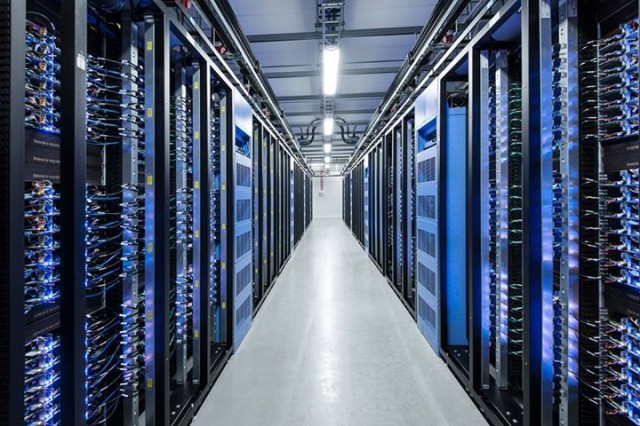 Most people are familiar with the terms IP address, server and domain, but do you know what they actually mean... or 'do'? In the last of our blog series about how the internet works, we take a look at IP addresses, domains, clients, servers and ports. And no, we don't mean the port you drink.
Most people are familiar with the terms IP address, server and domain, but do you know what they actually mean... or 'do'? In the last of our blog series about how the internet works, we take a look at IP addresses, domains, clients, servers and ports. And no, we don't mean the port you drink.
Internet Protocol: IP Addresses
Every machine on the Internet has a unique identifying number, called an IP Address. The IP stands for Internet Protocol, which is the language that computers use to communicate over the Internet. A protocol is the pre-defined way that someone who wants to use a service talks with that service. The "someone" could be a person, but more often it is a computer program like a Web browser.
A typical IP address looks like this:
216.27.61.137
To make it easier for us humans to remember, IP addresses are normally expressed in decimal format as a dotted decimal number like the one above. But computers communicate in binary form. Look at the same IP address in binary:
11011000.00011011.00111101.10001001
The four numbers in an IP address are called octets, because they each have eight positions when viewed in binary form. If you add all the positions together, you get 32, which is why IP addresses are considered 32-bit numbers. Out of the almost 4.3 billion possible combinations, certain values are restricted from use as typical IP addresses. For example, the IP address 0.0.0.0 is reserved for the default network and the address 255.255.255.255 is used for broadcasts.
Internet Protocol: Domain Name System
When the Internet was in its infancy, it consisted of a small number of computers hooked together with modems and telephone lines. You could only make connections by providing the IP address of the computer you wanted to establish a link with. For example, a typical IP address might be 216.27.22.162. This was fine when there were only a few hosts out there, but it became unwieldy as more and more systems came online.
The first solution to the problem was a simple text file maintained by the Network Information Center that mapped names to IP addresses. Soon this text file became so large it was too cumbersome to manage. In 1983, the University of Wisconsin created the Domain Name System (DNS), which maps text names to IP addresses automatically. This way you only need to remember a website address (as we know it), instead of an IP address.
Uniform Resource Locators (URL)
When you use the web or send an e-mail message, you use a domain name to do it. For example, the Uniform Resource Locator (URL) https://blog.vtsl.net/vtsl-blog contains the domain vtsl.net. So does this e-mail address: info@vtsl.net. Every time you use a domain name, you use the Internet's DNS servers to translate the human-readable domain name into the machine-readable IP address. Check out How Domain Name Servers Work for more in-depth information on DNS.
Clients & Servers
Internet servers make the Internet possible. All of the machines on the Internet are either servers or clients. The machines that provide services to other machines are servers. And the machines that are used to connect to those services are clients. There are Web servers, e-mail servers, FTP servers and so on serving the needs of Internet users all over the world.
When you connect to www.vtsl.net to read a page, you are a user sitting at a client's machine. You are accessing the VTSL server. The server machine finds the page you requested and sends it to you. Clients that come to a server machine do so with a specific intent, so clients direct their requests to a specific software server running on the server machine. For example, if you are running a Web browser on your machine, it will want to talk to the Web server on the server machine, not the e-mail server.
Ports
Any server machine makes its services available using numbered ports -- one for each service that is available on the server. For example, if a server machine is running a Web server and a file transfer protocol (FTP) server, the Web server would typically be available on port 80, and the FTP server would be available on port 21. Clients connect to a service at a specific IP address and on a specific port number.
Once a client has connected to a service on a particular port, it accesses the service using a specific protocol. Protocols are often text and simply describe how the client and server will have their conversation. Every Web server on the Internet conforms to the hypertext transfer protocol (HTTP). You can learn more about Internet servers, ports and protocols by reading How Web Servers Work.
Hopefully now you have a better understanding of how the ‘Internet’ as you know it, works to bring you information and transport messages in a mere millisecond. Without one of the components discussed, it would not work. But luckily for us, all the components do exist, and work together to deliver one of the most important technological developments of our lifetimes.
About VTSL
As one of the first VoIP providers to market with guaranteed voice quality, VTSL has been a pioneer of IP business phone technology in the UK. Providing small and large organisations with advanced business phone systems, VTSL offers free installation, no contracts and over 30 business-effiency features for free. With intuitive phones and free training, you will find that VTSL's VoIP business phone system is one that your employees will actually use! Find out more by calling 0207 078 3200 today.

